Key Takeaways
1. Machine learning fundamentals: Supervised vs. unsupervised learning
Machine learning is where these computational and algorithmic skills of data science meet the statistical thinking of data science, and the result is a collection of approaches to inference and data exploration that are not about effective theory so much as effective computation.
Supervised learning involves modeling relationships between input features and labeled outputs. It encompasses classification tasks, where the goal is to predict discrete categories, and regression tasks, which aim to predict continuous quantities. Examples include predicting housing prices or classifying emails as spam.
Unsupervised learning focuses on discovering patterns in unlabeled data. Key techniques include:
- Clustering: Grouping similar data points together
- Dimensionality reduction: Simplifying complex data while preserving essential information
These fundamental concepts form the backbone of machine learning, providing a framework for tackling diverse data analysis challenges.
2. Scikit-Learn: A powerful Python library for machine learning
Scikit-Learn provides a wide variety of efficient tools for machine learning and statistical modeling including classification, regression, clustering and dimensionality reduction via a consistence interface in Python.
Consistent API design makes Scikit-Learn user-friendly and efficient. The library follows a uniform pattern for all its models:
- Choose a class and import it
- Instantiate the class with desired hyperparameters
- Fit the model to your data
- Apply the model to new data
This standardized workflow allows users to easily switch between different algorithms without significant code changes. Scikit-Learn also integrates seamlessly with other Python scientific libraries like NumPy and Pandas, making it a versatile tool for data science projects.
3. Data representation and preprocessing in Scikit-Learn
The best way to think about data within Scikit-Learn is in terms of tables of data.
Proper data formatting is crucial for effective machine learning. Scikit-Learn expects data in a specific format:
- Features matrix (X): 2D array-like structure with shape [n_samples, n_features]
- Target array (y): 1D array with length n_samples
Preprocessing steps often include:
- Handling missing data through imputation
- Scaling features to a common range
- Encoding categorical variables
- Feature selection or dimensionality reduction
Scikit-Learn provides various tools for these preprocessing tasks, such as SimpleImputer for missing data and StandardScaler for feature scaling. Proper preprocessing ensures that algorithms perform optimally and produce reliable results.
4. Model selection and validation techniques
A model is only as good as its predictions.
Cross-validation is a critical technique for assessing model performance and preventing overfitting. It involves:
- Splitting data into training and testing sets
- Training the model on the training data
- Evaluating performance on the test data
Scikit-Learn offers tools like train_test_split for simple splits and cross_val_score for more advanced k-fold cross-validation. These methods help in:
- Estimating model performance on unseen data
- Comparing different models or hyperparameters
- Detecting overfitting or underfitting
Additionally, techniques like learning curves and validation curves help visualize model performance across different training set sizes and hyperparameter values, guiding the model selection process.
5. Feature engineering: Transforming raw data into useful inputs
One of the more important steps in using machine learning in practice is feature engineering — that is, taking whatever information you have about your problem and turning it into numbers that you can use to build your feature matrix.
Effective feature engineering can significantly improve model performance. Common techniques include:
- Creating polynomial features to capture non-linear relationships
- Binning continuous variables into discrete categories
- Encoding categorical variables using one-hot encoding or target encoding
- Text feature extraction using techniques like TF-IDF
- Combining existing features to create new, meaningful ones
Scikit-Learn provides various tools for feature engineering, such as PolynomialFeatures for creating polynomial and interaction features, and CountVectorizer or TfidfVectorizer for text data. The art of feature engineering often requires domain knowledge and creativity to extract the most relevant information from raw data.
6. Naive Bayes: Fast and simple classification algorithms
Naive Bayes models are a group of extremely fast and simple classification algorithms that are often suitable for very high-dimensional datasets.
Probabilistic approach underlies Naive Bayes classifiers, which are based on Bayes' theorem. Key characteristics include:
- Fast training and prediction times
- Good performance with high-dimensional data
- Ability to handle both continuous and discrete data
Types of Naive Bayes classifiers:
- Gaussian Naive Bayes: Assumes features follow a normal distribution
- Multinomial Naive Bayes: Suitable for discrete data, often used in text classification
- Bernoulli Naive Bayes: Used for binary feature vectors
Despite their simplicity, Naive Bayes classifiers often perform surprisingly well, especially in text classification tasks. They serve as excellent baselines and are particularly useful when computational resources are limited.
7. Linear regression: Foundation for predictive modeling
Linear regression models are a good starting point for regression tasks.
Interpretability and simplicity make linear regression a popular choice for many predictive modeling tasks. Key concepts include:
- Ordinary Least Squares (OLS) for finding the best-fit line
- Multiple linear regression for handling multiple input features
- Regularization techniques like Lasso and Ridge regression to prevent overfitting
Linear regression serves as a building block for more complex models and offers:
- Easy interpretation of feature importance
- Fast training and prediction times
- A basis for understanding more advanced regression techniques
While limited in capturing non-linear relationships, linear regression can be extended through polynomial features or basis function regression to model more complex patterns in data.
</instructions>
Last updated:
FAQ
What's Python Data Science Handbook about?
- Comprehensive Guide: Python Data Science Handbook by Jake VanderPlas is a thorough introduction to data science using Python, focusing on essential tools and techniques for data analysis, machine learning, and visualization.
- Key Libraries: It covers crucial libraries like NumPy, Pandas, Matplotlib, and Scikit-Learn, providing practical examples and code snippets to help readers apply data science methods.
- Interdisciplinary Skills: The book emphasizes the interdisciplinary nature of data science, combining statistical knowledge, programming skills, and domain expertise.
Why should I read Python Data Science Handbook?
- Hands-On Learning: The book adopts a hands-on approach, allowing readers to learn by doing through interactive examples and exercises that reinforce the concepts discussed.
- Wide Range of Topics: It covers topics from basic data manipulation to advanced machine learning techniques, making it a valuable resource for deepening understanding of data science.
- Authoritative Insights: Written by Jake VanderPlas, a respected figure in the data science community, the book provides insights and best practices grounded in real-world applications.
What are the key takeaways of Python Data Science Handbook?
- Data Manipulation Skills: Readers will gain essential skills in data manipulation using Pandas, including data cleaning, transformation, and aggregation techniques.
- Machine Learning Techniques: The book covers various machine learning techniques, such as k-means clustering and support vector machines, with practical implementations using Scikit-Learn.
- Visualization Importance: It emphasizes the importance of data visualization, teaching readers how to effectively communicate insights using Matplotlib and Seaborn.
What are the best quotes from Python Data Science Handbook and what do they mean?
- "Data science is about asking the right questions.": This quote highlights the importance of formulating clear, relevant questions, as the success of data science projects often hinges on the initial inquiry.
- "Visualization is a key part of data analysis.": It underscores the role of visualization in understanding data, as effective visualizations can reveal patterns and insights that might be missed in raw data.
- "Machine learning is a means of building models of data.": This encapsulates the essence of machine learning, suggesting that the goal is to create models that generalize from training data to make predictions on new data.
How does Python Data Science Handbook approach the use of libraries like NumPy and Pandas?
- Library-Specific Chapters: Each library is covered in dedicated chapters, providing in-depth explanations and practical examples of how to use them effectively.
- Focus on Data Manipulation: The book emphasizes data manipulation techniques using Pandas, such as filtering, grouping, and merging datasets.
- Performance Considerations: It discusses performance aspects of using these libraries, helping readers understand when to use specific functions for optimal efficiency.
How does Python Data Science Handbook approach machine learning?
- Supervised vs. Unsupervised Learning: The book distinguishes between these learning types, explaining their respective applications, which is critical for applying machine learning techniques effectively.
- Scikit-Learn Library: It introduces Scikit-Learn as a powerful tool for implementing machine learning algorithms, providing examples of various algorithms, including classification and regression techniques.
- Model Validation: Emphasizes the importance of model validation and selection, teaching techniques like cross-validation to ensure models generalize well to new data.
What is the bias-variance trade-off in machine learning as explained in Python Data Science Handbook?
- Definition: The bias-variance trade-off describes the balance between two types of errors affecting model performance: bias and variance.
- Bias: Refers to error from overly simplistic assumptions, leading to underfitting if the model is too simple.
- Variance: Refers to error from sensitivity to training data fluctuations, leading to overfitting if the model is too complex.
How does Python Data Science Handbook explain feature engineering?
- Crucial Step: Feature engineering is crucial in the machine learning process, involving transforming raw data into meaningful features to improve model performance.
- Common Techniques: Covers techniques like one-hot encoding for categorical variables and polynomial features for capturing non-linear relationships.
- Practical Examples: Provides practical examples and code snippets to illustrate implementation using Python libraries.
What is the role of Scikit-Learn in Python Data Science Handbook?
- Comprehensive API: Scikit-Learn offers a consistent API for implementing machine learning algorithms, making it easier to apply techniques.
- Model Evaluation: Includes tools for model evaluation, such as cross-validation and performance metrics, ensuring robust and reliable models.
- Integration: Integrates well with libraries like NumPy and Pandas, allowing seamless data manipulation and analysis.
How does Python Data Science Handbook address handling missing data?
- NaN and None: Explains how Pandas uses NaN and None to represent missing data, discussing implications for data analysis.
- Handling Methods: Introduces methods like
dropna()to remove missing values andfillna()to replace them, with practical examples. - Clean Data Importance: Emphasizes that handling missing data is crucial for accurate analysis, making these methods essential for effective data science.
What is the significance of PCA in data analysis according to Python Data Science Handbook?
- Dimensionality Reduction: PCA reduces dataset dimensionality while preserving variance, aiding in visualization and analysis.
- Feature Extraction: Helps extract important features from high-dimensional data, improving model performance by reducing noise.
- Visualization: Illustrates how PCA can be used for visualization, allowing plotting of high-dimensional data in two or three dimensions.
How does Python Data Science Handbook explain the concept of support vector machines (SVM)?
- Definition: SVMs are supervised learning algorithms for classification and regression, finding the optimal hyperplane separating classes.
- Maximizing Margin: Aim to maximize the margin between closest points of different classes, leading to better generalization.
- Kernel Trick: Covers the kernel trick, allowing SVMs to handle non-linear decision boundaries by transforming input space.
Review Summary
Python Data Science Handbook receives mostly positive reviews, praised for its practical approach and clear explanations of essential tools like NumPy, Pandas, and Matplotlib. Readers appreciate its depth on data manipulation and visualization. The machine learning chapter is considered a good introduction, though some find it lacking depth. The book is recommended for beginners and as a reference for experienced users. Some reviewers note that certain parts may be outdated, and a few criticize the lack of exercises and real-world examples.
Similar Books
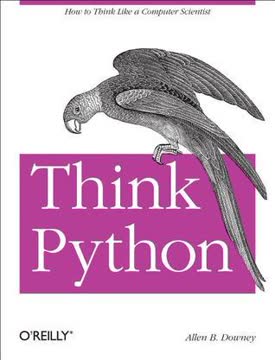
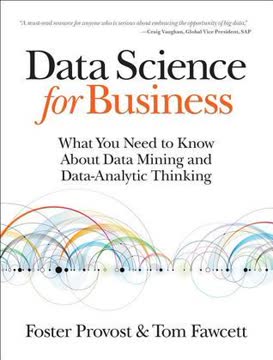
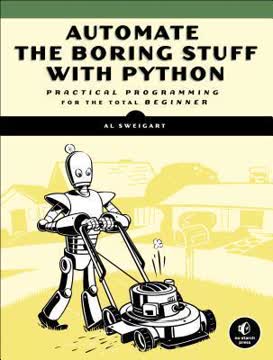

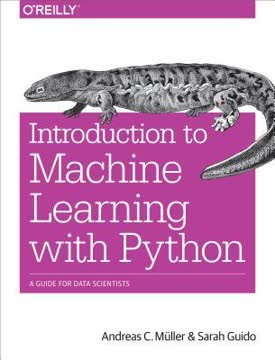

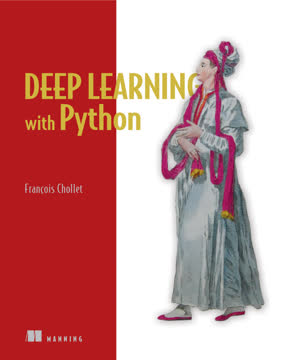


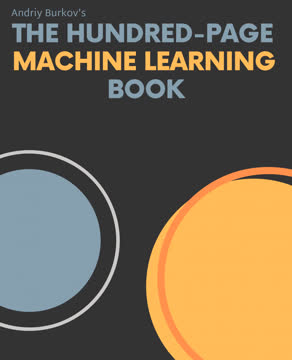
Download PDF
Download EPUB
.epub digital book format is ideal for reading ebooks on phones, tablets, and e-readers.




